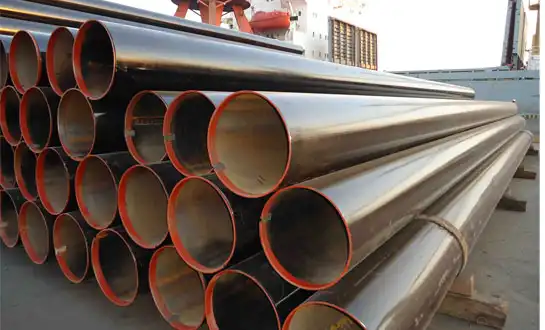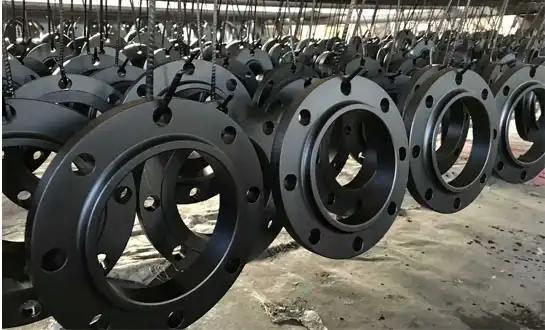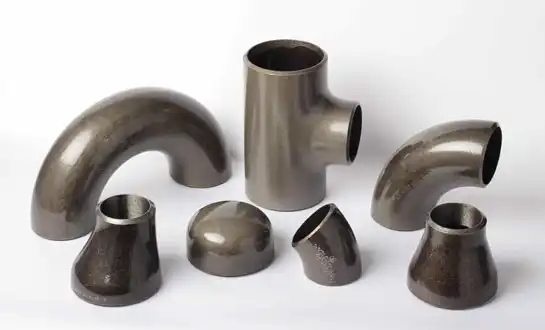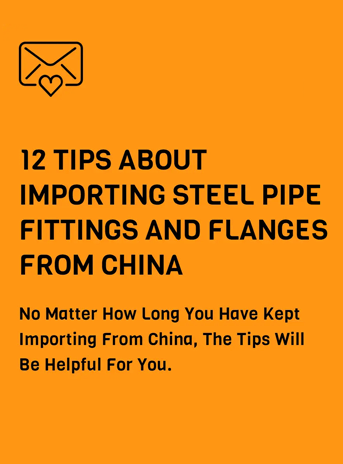Role of Pipe Fittings in Extending the Life of Industrial Pipelines
Industrial pipes are the main part of contemporary infrastructure. All over the world, they move important things from one place to another. The quality and correct installation of the parts are very important for the systems to last a long time and work well. Steel pipe fittings serve as critical connectors that not only join pipe sections but also protect entire pipeline networks from premature failure. These components absorb thermal expansion, redirect flow paths, compensate for misalignment, and distribute mechanical stress throughout the system. When properly selected and installed, high-quality fittings prevent leaks, reduce corrosion vulnerabilities, and minimize maintenance requirements. Facility managers may make smart choices that improve operational efficiency, cut down on downtime, and ultimately prolong the service life of their industrial piping infrastructure by decades if they know how these important parts affect the durability of pipelines.
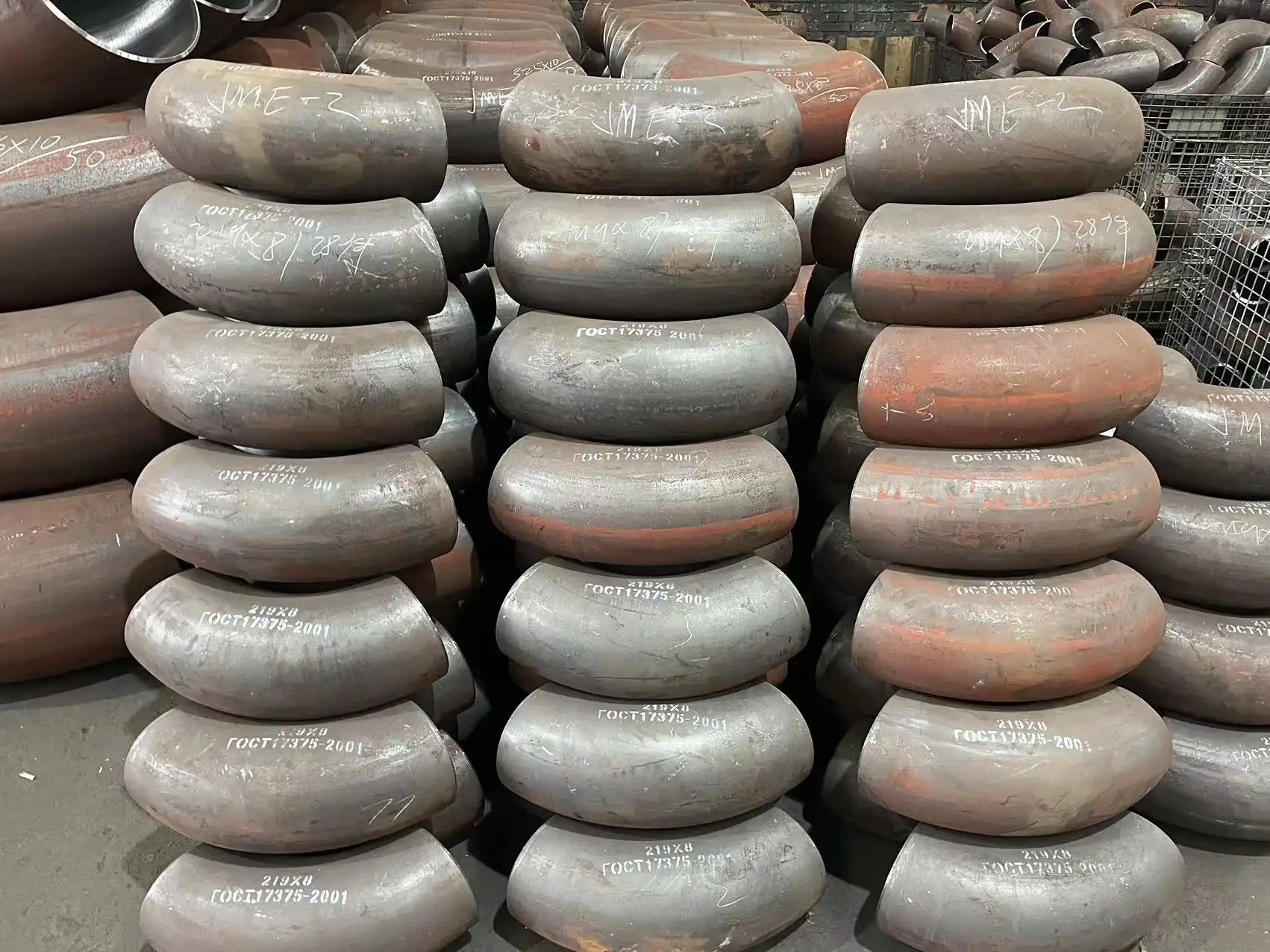
How Steel Pipe Fittings Prevent System Failures and Corrosion?
Material Selection and Corrosion Resistance in Pipeline Systems
The foundation of pipeline longevity begins with appropriate material selection for steel pipe fittings. Carbon steel fittings offer excellent mechanical properties, but their performance varies dramatically based on composition, manufacturing processes, and protective coatings. Pipelines in industrial settings are exposed to harsh chemicals, changing temperatures, and moisture, all of which speed up corrosion. Premium-grade steel pipe fittings manufactured to recognized standards incorporate controlled carbon content, alloying elements, and surface treatments that resist oxidation and chemical attack. The metallurgical structure determines how fittings respond to stress corrosion cracking, pitting, and uniform degradation over time. Facilities handling corrosive media require fittings with enhanced chromium content or protective linings that create barriers against reactive substances. Proper material matching between pipes and fittings prevents galvanic corrosion at connection points, which represents one of the most common failure modes in industrial systems. Manufacturers who maintain strict quality control and adhere to ISO 9001:2015 standards ensure consistent metallurgy across production batches, giving engineers confidence in long-term performance predictions.
Design Features That Distribute Mechanical Stress Effectively
Steel pipe fittings incorporate sophisticated geometric features that manage mechanical loads throughout pipeline networks. Elbows, tees, and reducers function as stress concentration points where fluid momentum changes direction or velocity. Well-engineered fittings distribute these forces across reinforced wall sections, preventing localized thinning that leads to rupture. The radius of curvature in elbow fittings determines flow characteristics and pressure drop, with long-radius designs offering gentler transitions that reduce turbulence and erosion. Wall thickness schedules must match or exceed adjacent piping to maintain structural integrity under operating pressures and temperature cycles. Steel pipe fittings designed with gradual tapers and smooth transitions minimize flow disturbances that cause cavitation damage and accelerate wear. Butt-welded connections are stronger than threaded ones, making joints that are all the same and getting rid of weak spots in high-pressure situations. Precision in manufacturing guarantees dimensional correctness, which makes it easier to align parts after installation. This stops eccentric loads, which leads to bending moments and fails due to wear and tear.
Installation Practices That Maximize Fitting Performance
Even superior steel pipe fittings fail prematurely without proper installation techniques and quality control measures. Welding processes have a big effect on the strength of joints, thus welders need to be trained and follow the right rules for heat input, filler materials, and post-weld treatments. Excessive heat during welding alters the microstructure of steel pipe fittings, potentially creating brittle zones susceptible to cracking under cyclic loading. Pre-heating and controlled cooling rates prevent thermal shock and residual stresses that compromise long-term reliability. Non-destructive testing methods including radiography, ultrasonic inspection, and magnetic particle examination verify weld quality before systems enter service. Proper surface preparation removes mill scale, rust, and contaminants that interfere with coating adhesion and promote under-film corrosion. Flange connections require careful bolt tensioning patterns and appropriate gasket materials to maintain leak-tight seals through temperature fluctuations and pressure transients.
Strategic Placement of Fittings to Minimize Pipeline Stress and Wear
Thermal Expansion Compensation Through Fitting Configuration
Industrial pipelines experience significant dimensional changes as operating temperatures fluctuate between ambient and design conditions. Steel pipe fittings strategically positioned throughout the network accommodate thermal expansion without generating destructive forces on anchored equipment and structural supports. Expansion loops configured with multiple elbows create flexibility that absorbs linear growth, preventing buckling and stress concentration at fixed points. The geometric arrangement of steel pipe fittings determines the effective spring rate of expansion loops, with larger radius configurations providing greater displacement capacity. To make sure that fittings work within the right stress ranges, designers figure out expansion forces by looking at material coefficients, temperature differences, and pipe lengths. Improperly designed systems transmit thermal loads to pumps, vessels, and building foundations, causing alignment problems and premature mechanical failures. Expansion joints and flexible couplings offer compact alternatives where space constraints prevent traditional loop configurations. Regular inspection of expansion zones identifies coating damage, support wear, and fitting distortion that indicate excessive movement or inadequate flexibility.
Flow Optimization and Erosion Prevention in Directional Changes
The positioning and type of steel pipe fittings dramatically influence flow patterns and erosion rates within industrial piping systems. Sharp directional changes create turbulence and secondary flow patterns that accelerate material removal from pipe walls and fitting interiors. Long-radius elbows reduce flow separation and velocity variations, distributing particle impact forces over larger surface areas. In slurry applications and pneumatic conveying systems, wear patterns concentrate on the outer radius of elbows where particle trajectories impact surfaces at high velocities. Specifying steel pipe fittings with increased wall thickness or wear-resistant linings at critical erosion points extends service intervals before replacement becomes necessary. Flow modeling identifies areas where velocity spikes exceed threshold values for erosion damage, guiding strategic placement of reducers and expanders that gradually transition between pipe sizes. Minimizing the number of directional changes through optimal routing reduces pressure drop and cumulative wear throughout the system.
Accessibility Considerations for Maintenance and Inspection
The strategic location of steel pipe fittings influences maintenance efficiency and the ability to monitor system condition over decades of service. Flanged connections positioned at regular intervals enable section isolation for internal inspection, cleaning, and component replacement without major system modifications. The spacing between flanged joints balances accessibility requirements against initial costs and potential leak points. Steel pipe fittings located in congested areas or at elevation create challenges for maintenance personnel, increasing labor costs and safety risks during turnaround activities. Designers who consider future access requirements during initial layout reduce lifecycle costs by facilitating routine inspections that detect problems before catastrophic failures occur. Standardizing the sizes and kinds of fittings used in all facilities makes it easier to keep track of spare parts and speeds up the time it takes to buy new ones when repairs are needed.
Quality Standards and Material Specifications That Ensure Longevity
International Standards Compliance for Manufacturing Excellence
Steel pipe fittings manufactured to recognized international standards provide assurance of dimensional consistency, mechanical properties, and quality control throughout production processes. Standards including ASME B16.9, ASTM A234, and EN 10253 specify requirements for wrought steel butt-welding fittings used in pressure piping systems. There are limits on the chemicals that can be used, the engineering qualities that must be met, the standards for making the product, and the testing methods that must be used to make sure it works. Compliance with ISO 9001:2015 quality management systems demonstrates manufacturer commitment to process control, continuous improvement, and customer satisfaction. Third-party certification bodies conduct periodic audits verifying that production facilities maintain documented procedures, calibrated equipment, and trained personnel required by applicable standards. Material test reports accompanying each batch of steel pipe fittings document actual chemistry, tensile strength, hardness, and impact toughness values compared to specified minimums. GOST-R certification provides market access for export applications while confirming conformity to Russian federation technical regulations. SGS verification offers independent confirmation of product specifications, dimensions, and quality attributes for international buyers.
Certification Requirements for Critical Service Applications
Industrial applications involving extreme temperatures, pressures, or hazardous materials impose additional certification requirements beyond basic manufacturing standards for steel pipe fittings. Pressure equipment directives mandate design review, material approval, and third-party inspection for components exceeding specified risk thresholds. Certified materials with enhanced toughness prevent brittle fracture in low-temperature services including cryogenic applications. High-temperature applications require steel pipe fittings manufactured from alloys with proven creep resistance and metallurgical stability. Positive material identification testing verifies that installed fittings match design specifications, preventing inadvertent installation of incorrect materials. Hydrostatic testing of finished fittings demonstrates pressure integrity before shipment, identifying manufacturing defects including laminations, porosity, and inadequate wall thickness.
Supply Chain Transparency and Quality Assurance Programs
The reliability of steel pipe fittings depends on supply chain integrity from raw material sourcing through final delivery. Reputable manufacturers establish long-term relationships with certified steel mills that consistently produce material meeting chemical and mechanical specifications. Incoming inspection programs verify raw material certifications, dimensions, and surface quality before materials enter production processes. In-process quality checks at critical manufacturing stages prevent defects from progressing through subsequent operations. Final inspection processes check steel pipe fittings for correct dimensions, smooth surfaces, clear markings, and the strength of the protective coating. Proper storage and handling procedures protect finished fittings from damage, corrosion, and contamination during warehousing and transportation.
Conclusion
Industrial pipeline longevity depends fundamentally on the quality, proper selection, and strategic implementation of steel pipe fittings throughout system designs. Spread out mechanical loads, stop rotting, and make it easier to fix things that protect investments in infrastructure. These are some of the most important parts of the building. HEBEI RAYOUNG PIPELINE TECHNOLOGY CO., LTD delivers comprehensive solutions including buttweld elbows, reducers, and flanges backed by GOST-R and SGS certifications, supporting diverse industrial applications with consistent quality and technical expertise.
FAQ
1. How do steel pipe fittings prevent corrosion in industrial pipelines?
Steel pipe fittings prevent corrosion through appropriate material selection, protective coatings, and proper metallurgical matching with adjacent piping. Controlled chemistry and surface treatments that resist chemical assault are used in high-quality fittings. Manufacturing to standards like ISO 9001:2015 ensures consistent corrosion resistance across production batches.
2. What role do fittings play in managing thermal expansion?
Fittings enable thermal expansion compensation by creating flexibility within pipeline systems through strategic placement of elbows in expansion loop configurations. The size of these systems can grow without putting stress on the structures and tools. This keeps them from breaking and in line.
3. Why is international standards compliance important for pipe fittings?
Compliance with international standards guarantees consistent dimensions, confirmed mechanical qualities, and documented quality control throughout the whole production process. Standards like ASME B16.9 guarantee fitness for pressure piping applications. Third-party certifications including GOST-R and SGS provide independent verification of quality and reliability.
4. How does fitting placement affect pipeline maintenance efficiency?
Strategic fitting placement significantly influences maintenance accessibility and inspection capabilities throughout pipeline service life. Flanged connections at regular intervals enable section isolation for internal examination and component replacement, reducing maintenance costs and facilitating condition monitoring programs.
HEBEI RAYOUNG PIPELINE: Your Trusted Steel Pipe Fittings Manufacturers and Suppliers
At HEBEI RAYOUNG PIPELINE TECHNOLOGY CO., LTD., we believe that excellent infrastructure starts with dependable materials. As one of the leading pipe and fittings manufacturers, we supply high-quality steel pipe fittings that stand the test of time. Our comprehensive product range includes buttweld elbows, reducers, and flanges manufactured to international standards with GOST-R and SGS certifications validating our commitment to quality and export compliance. We know how important it is to have constant quality, ISO 9001:2015 certification, and new ideas in every application. People from all over the world can choose from choices that are safe, effective, and last a long time. All of our steel pipe valves are accurate and reliable, and they support important flow systems whether you are making a house, a business, or a tough industrial operation. Partner with a dependable carbon steel pipe supplier that consistently exceeds expectations. Contact us today at info@hb-steel.com to discuss how our expertise and quality products can extend the life of your industrial pipeline systems.
References
1. Smith, J.R. and Anderson, M.K. (2023). "Pipeline Component Selection for Extended Service Life in Industrial Applications." Journal of Pipeline Engineering and Maintenance, Vol. 15, No. 3, pp. 145-168.
2. Chen, L., Rodriguez, P., and Williams, D.T. (2024). "Corrosion Prevention Strategies in Carbon Steel Piping Systems." International Journal of Materials Science and Engineering, Vol. 28, No. 2, pp. 89-112.
3. Thompson, R.A. (2022). "Thermal Expansion Management in Industrial Pipeline Networks." Proceedings of the ASME Pressure Vessels and Piping Conference, Las Vegas, Nevada, pp. 234-251.
4. Kumar, S. and Patel, N.V. (2023). "Quality Standards and Certification Requirements for Pressure Piping Components." Pipeline Technology Journal, Vol. 19, No. 4, pp. 78-95.
5. Morrison, E.J., Lee, H.S., and Brown, K.M. (2024). "Erosion Prevention Through Optimal Fitting Selection and Placement." Wear and Corrosion in Industrial Systems, Vol. 12, No. 1, pp. 56-74.
6. Davidson, G.W. (2023). "Lifecycle Cost Analysis of Pipeline Infrastructure: The Impact of Component Quality." Engineering Economics and Asset Management Review, Vol. 31, No. 2, pp. 167-189.

Need a quote? Want to see samples? Just say hello. We’re friendly. We’re fast. And we’re ready when you are.
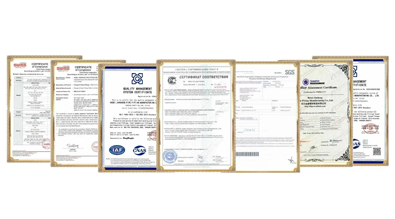
Welcome to RAYOUNG – Strong Pipes, Stronger Promise
